Nature is absolutely incredible. This Earth of ours is filled with so many creatures, so much flora, and much more that we have not discovered yet. We continue to unearth things that have been around for thousands if not millions of years. Our rivers are amazing, our lakes beautiful, and our mountains, majestic. One such majestic mountain is Mount Kilimanjaro. It is one of the tallest mountains in the world and one of the most beautiful. Let’s take a look at 10 incredible facts about Mount Kilimanjaro.
Highest Free-Standing Mountain

Mount Kilimanjaro is the tallest mountain in
Africa
.
©Paul Hampton/Shutterstock.com
Mount Kilimanjaro is not the tallest mountain in the world. That top prize belongs to Mount Everest, which is part of the Himalayas. The factor of the matter is that most mountains belong to mountain ranges. However, Mount Kilimanjaro is, in fact, a free-standing mountain. Thus, it is the highest free-standing mountain in the world. It is also the African continent’s tallest mountain. Uhuru Point is Mount Kilimanjaro’s summit, which is 19,341 feet above sea level.
It’s A Volcano
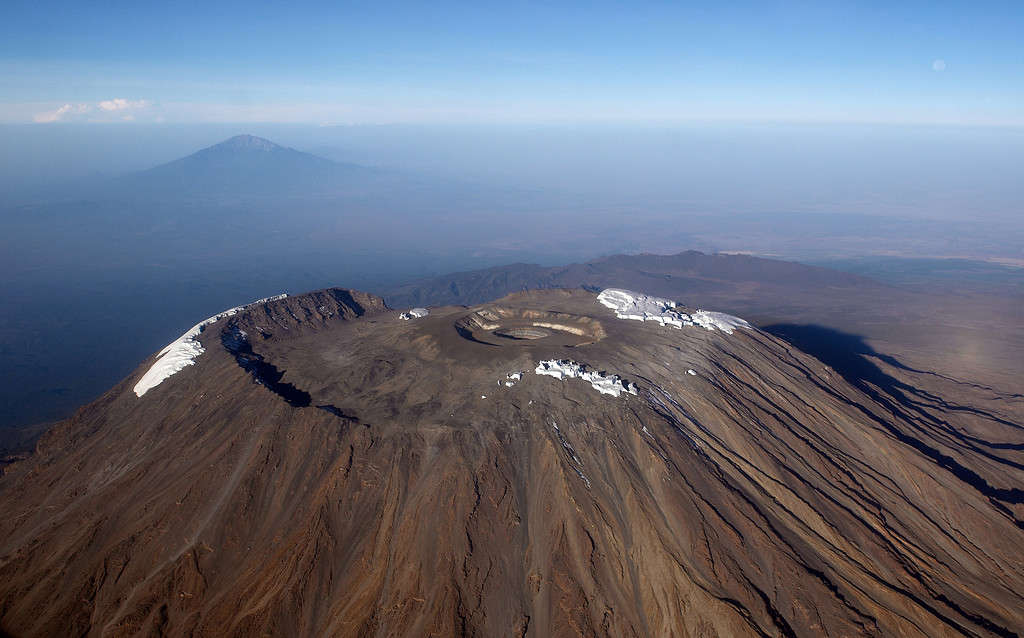
The mountain is also the tallest free-standing volcano in the world.
©lexan/iStock via Getty Images
Mount Kilimanjaro is not only a mountain, but it is also a dormant volcano. Furthermore, Mount Kilimanjaro has three volcanic cones — Mawenzi, Shira, and Kibo. Out of three volcanic cones, Mawenzi and Shira are extinct. Kibo is dormant and could potentially erupt in the future. The last time there was volcanic activity was around 360,000 years ago.
Seven Summits
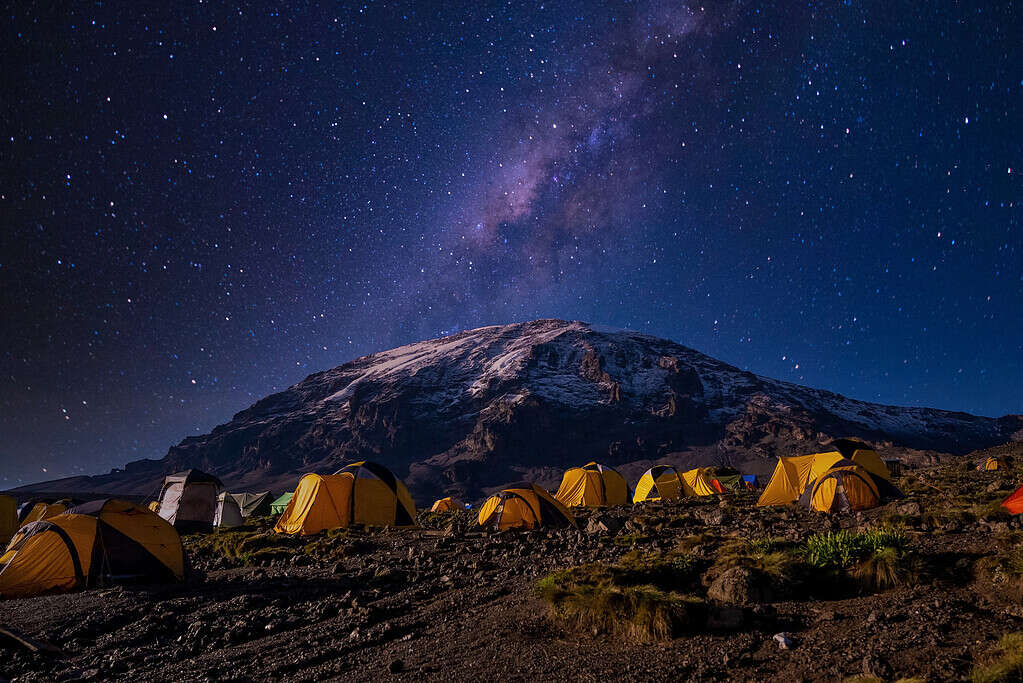
Mount Kilimanjaro is the fourth-highest mountain in the world.
©Wirestock/iStock via Getty Images
Because it’s the tallest mountain in Africa, Mount Kilimanjaro is part of the seven summits. It is a club where only seven mountains can be — the highest mountain in each continent. The other six summits are as follows:
- North America: Mount McKinley
- South America: Mount Aconcagua
- Antarctica: Mount Vinson
- Australasia: Mount Kosciuszko
- Asia: Mount Everest
- Europe: Mount Elbrus
Its Glaciers

The mountain has summits that are nearly covered with glacier ice.
©anothersteph/iStock via Getty Images
A fascinating part about the mountain is that it has glaciers on its summit. They are thought to be about 11,700 years old. Unfortunately, due to climate change, the glaciers are starting to melt away. In the late 1890s, the Kibo summit was entirely covered in ice, but only 120 years later, and it isn’t anymore.
Mountain Climbers
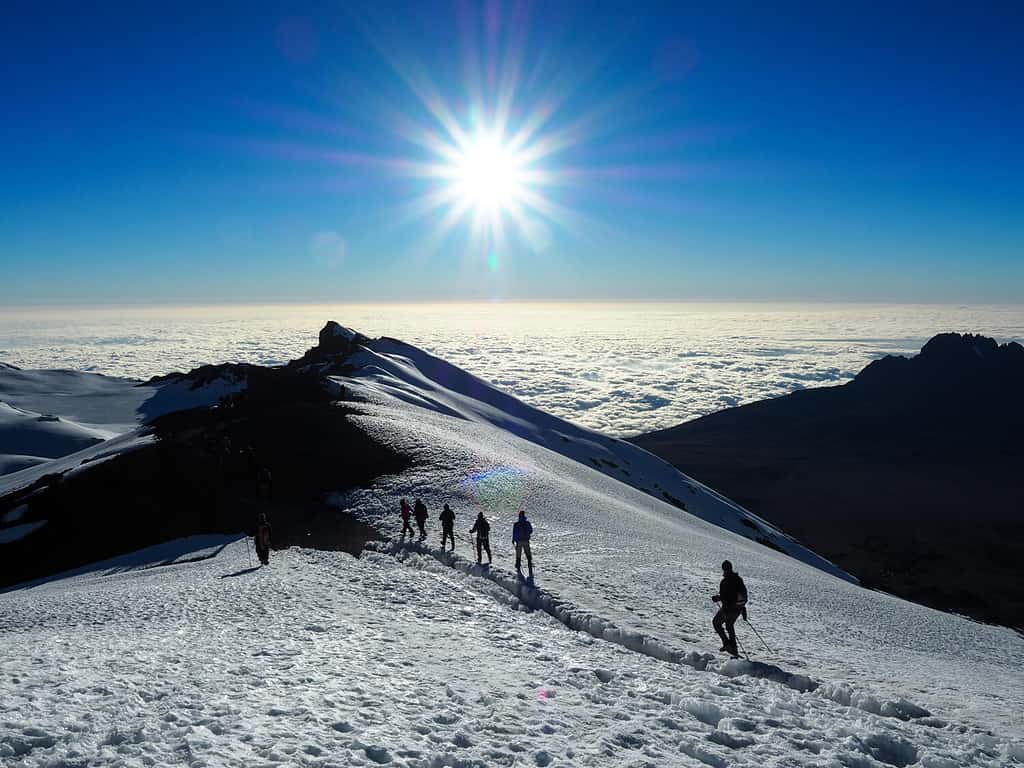
Swiss marathon runner Karl Egloff was the person who climbed up Mount Kilimanjaro the fastest, at 4 hours and 56 minutes.
©TristanBalme/Shutterstock.com
The mountain is popular with mountain climbers and every year around 30,000 people come to try and climb Mount Kilimanjaro. Around two-thirds of climbers that try are successful. The oldest person to climb up the mountain was 87 years old and his name was Valtee Daniel, a Frenchman. The youngest person to climb up Mount Kilimanjaro was 6 years old Coaltan Tanner from Canada.
Different Ecological Zones
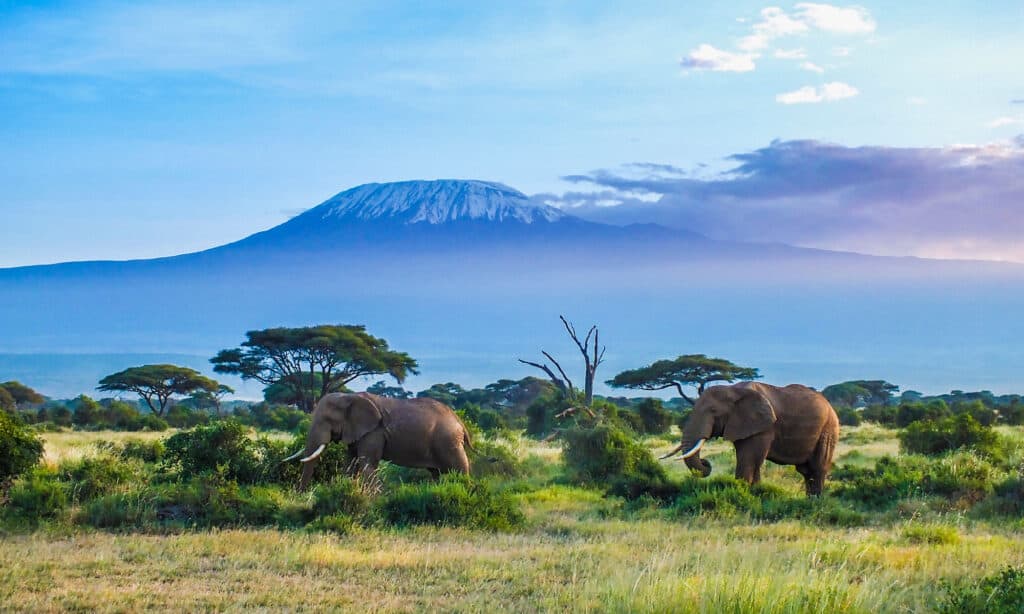
Mount Kilimanjaro has five different climate zones as you climb up.
©iStock.com/squashedbox
One unique thing about Mount Kilimanjaro is that it has five climate zones. Climbers feel as if they are climbing through major ecological zones as they go up the mountain. The zones are as follows:
- Cultivation/Bushland Zone (from 2,600 feet to 5,900 feet)
- Rainforest (5,900 feet to 9,200 feet)
- Heather/Moorland Zone (9,200 feet to 13,100 feet)
- Alpine Desert (13,000 feet to 16,000 feet)
- Arctic Tundra (16,404 feet to 19,341 feet)
Mountain’s History
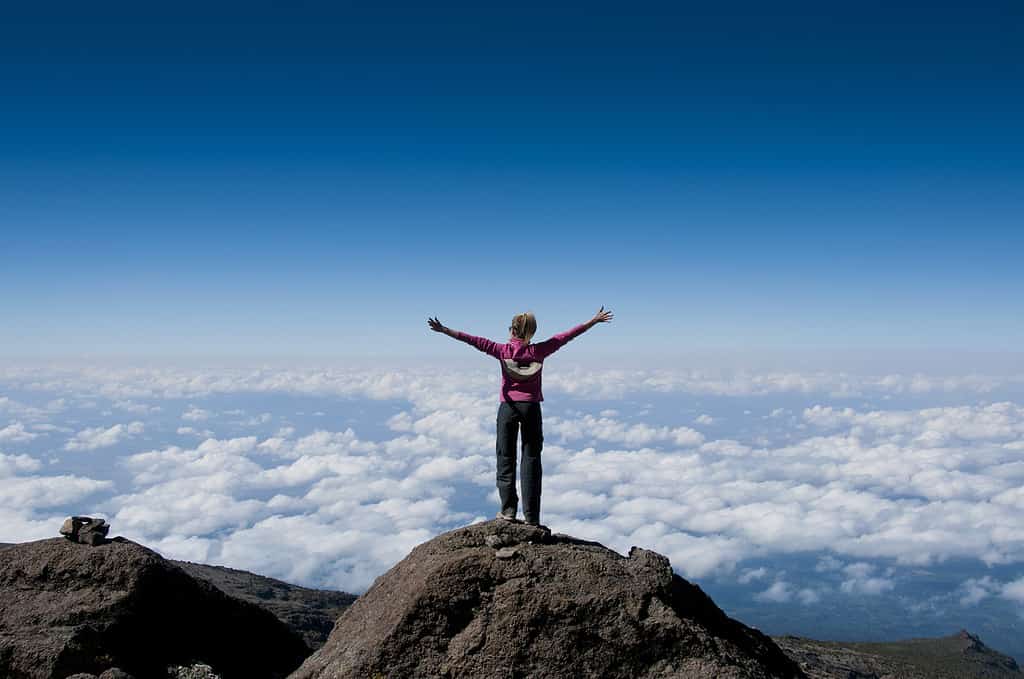
The mountain has had a colorful and impactful history for humans for thousands of years.
©munro1/iStock via Getty Images
The Chagga tribe historically lived in the foothills of the mountain for thousands of years. In 1848, the first Europeans to reach the mountain (and attempt to climb to the top) were Germans Johannes Rebmann and Johann Krapf. The International Union of Geological Sciences has named it a geological heritage site.
Incredible Biodiversity

There are many plants and vegetation in the cultivation and bushland zone of the mountain, as well as several species of animals that roam around.
©Volodymyr Burdiak/Shutterstock.com
When it comes to wildlife, there aren’t many animals, but you can see a few while you climb up. Some of the animals that you may spot include elephants, Cape buffaloes, mongooses, warthogs, zebras, leopards, and bushbucks. In terms of plants and vegetation, maize, sunflowers, wheat, and beans are farmed in the foothill areas of the mountain.
Tourism Industry
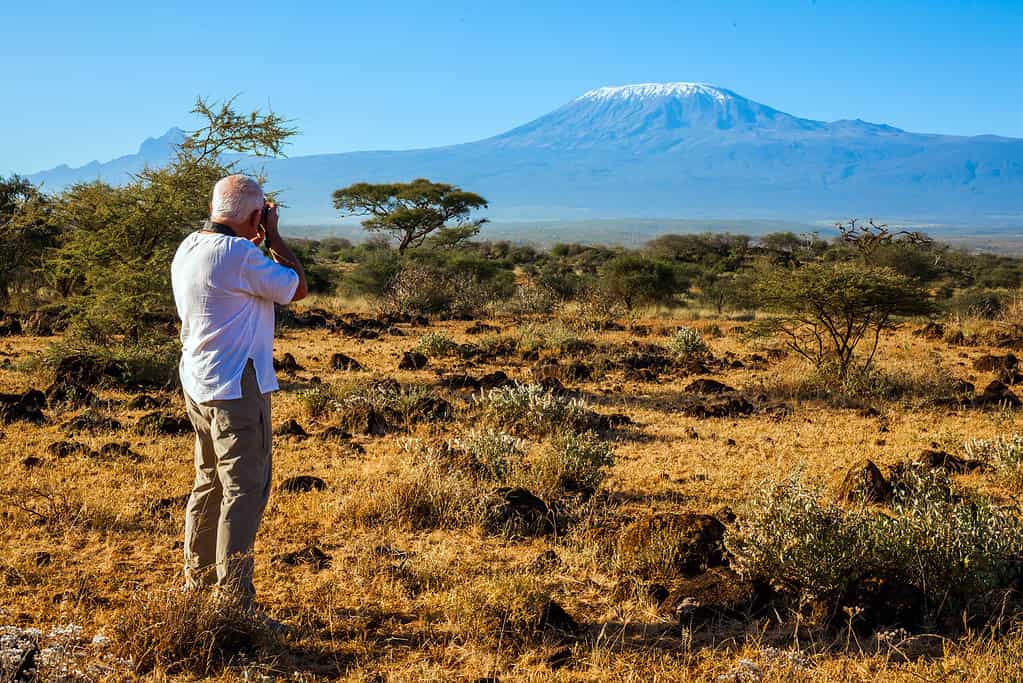
Tanzania brings in tens of millions of tourist dollars because visitors come to Mount Kilimanjaro every year.
©kavram/iStock via Getty Images
Tanzania, the country where Mount Kilimanjaro is located, relies on the mountain for revenue. Mount Kilimanjaro is located within Kilimanjaro National Park and it has generated tens of millions of dollars every year. Tanzania built an airport, the Kilimanjaro International Airport, to ensure accessibility for tourists visiting the mountain.
Climate Change Threats
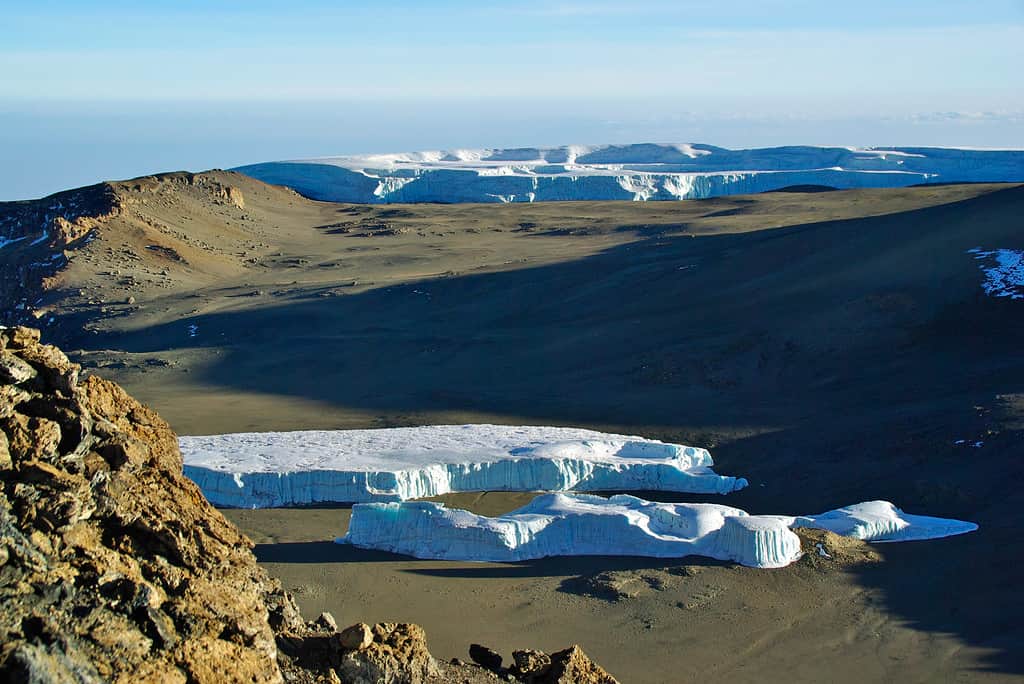
Mount Kilimanjaro is threatened by global warming and the world’s constant climatic changes.
©Alexzappa/iStock via Getty Images
The world is not immune to climate change and unfortunately, it happens everywhere. Mount Kilimanjaro’s glaciers and the biodiversity that lives within the area are at threat. Scientists believe that because of the ongoing global warming, the icecaps atop Mount Kilimanjaro will disappear by 2050.
Conclusion
And there you have it, these are 10 incredible facts about Mount Kilimanjaro. The impressive mountain has captivated people for centuries. It will continue to do so, but unfortunately, climate change is threatening various ecosystems and the wildlife on the mountain. Government and inter-governmental action are needed to ensure that nature continues to thrive.
The photo featured at the top of this post is © Volodymyr Burdiak/Shutterstock.com
Thank you for reading! Have some feedback for us? Contact the AZ Animals editorial team.







